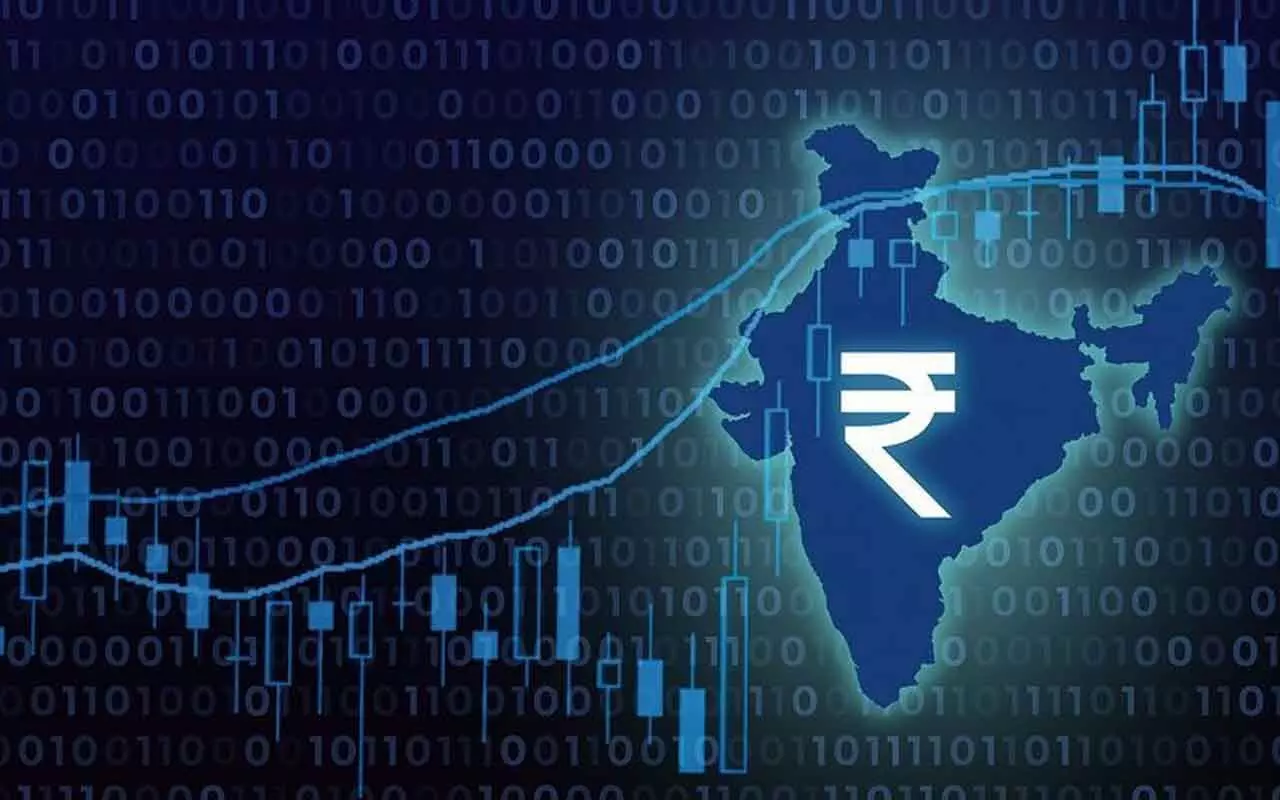Upward Revision In Nominal GDP Augurs Well For Deficit, Debt
Upward Revision In Nominal GDP Augurs Well For Deficit, Debt

India’s economy, as per NSO’s GDP figures for Q4 and the provisional estimates for the whole year, grew by 7.4 per cent in Q4 as against 8.4 per cent in the year-ago period.
The GVA (gross value added) grew by 6.8 per cent in Q4 and 6.4 per cent in FY25. Core GVA grew by 6.4 per cent in FY25. Nominal GDP grew by 9.8 per cent in FY25, in line with flat growth in the GDP deflator indicating broad-based correction in domestic prices. The gap between GDP and GVA of 60 bps is due to higher net indirect taxes which grew by 12.7 per cent.
From the production side, all sectors exhibited better growth numbers in Q4. While industry grew by 6.5 per cent, the services sector grew by 7.3 per cent in Q4. Within industry, construction sector alone grew by whopping 10.8 per cent in Q4 and manufacturing sector increased by 4.8 per cent.
Government’s fiscal deficit marginally exceeded the revised estimate for FY25 by Rs 77 billion, albeit led by a welcome overshooting in capital expenditure amid a less palatable miss on the receipts side being largely offset by considerable savings of Rs 0.9 trillion in revenue expenditure in the fiscal.
The upward revision in the FY26 nominal GDP number also augurs well for meeting the deficit and debt to GDP targets for FY26.
Despite a relatively lower projected nominal GDP growth of 9.0 per cent in FY26 vis-à-vis the budgeted levels of 10.1 per cent, the fiscal deficit-to-GDP ratio can be contained at 4.4 per cent in FY26, as per Icra, while also accommodating a marginal fiscal slippage, given the larger base. This, along with the additional cushion on the receipts side on account of the higher-than-budgeted RBI dividend transfer, provides comfort on the fiscal front amidst heightened global uncertainties.
The government’s capex surged by 61 per cent to Rs 1.6 trillion in April. However, this was offset by the modest contraction in revex in the month, which contained the growth in total expenditure to 10 per cent. Given this, and the 21 per cent growth in revenue receipts, the fiscal deficit was limited at Rs 1.9 trillion in April.
India’s economy has maintained a steady growth trajectory, with real GDP expanding by 6.5 per cent in FY 2024-25. In nominal terms, GDP grew by 9.8 per cent highlighting India’s position as one of the fastest-growing major economies globally.
The growth was, as per PHDCCI, largely driven by healthy growth in private consumption, and capital formation. The Private Final Consumption Expenditure increased by 7.2 per cent, while Gross Fixed Capital Formation rose by 7.1 per cent in Q4, reflecting investment-led momentum.
Per capita GDP in real terms increased by 5.5 per cent, reaching `1.33 lakh, while per capita Gross National Income stood at `1.31 lakh, marking a 5.4 per cent rise.
These gains suggest broad-based improvements in economic well-being.

